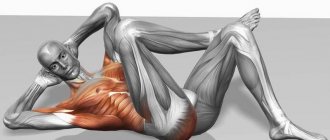During communication, we express our attitude towards the interlocutor in different ways. Words and eloquent glances help us understand how our partner feels. Sometimes touches speak more than hundreds of words. What is tactile contact, what is its role in building relationships with others: family members, friends and partners.
What is the function of touch, what are they, what processes are involved in tactile contact, how is tactile communication between a man and a woman expressed, can touch revive passion or promote flirting, and when should you keep your distance - read our material.
What is tactile contact and why is it so important?
Tactile contact, or touch, plays a big role in human communication. In the work environment, tactile contact is often limited to handshakes. Family, friendly or loving hugs and touches are another matter. By touching or hugging a person, we show that we care about him.
There are several types of touches:
- polite;
- workers;
- friendly;
- love;
- sexy.
Tactile contact is, first of all, a way to show a person that you trust him and treat him warmly. If a person allows himself to be touched, it means he trusts you.
Content
- 1 Categories 1.1 Functional / professional
- 1.2 Social/polite
- 1.3 Friendship/warmth
- 1.4 Love and intimacy 1.4.1 Healthy touch
- 1.4.2 Violence
- 3.1 Positive effect
- 4.1 High contact
Chemical processes during tactile contact
Humans' love for hugs originates from our distant relatives - monkeys. All primates practice grooming, or grooming: they clean each other's fur. In addition to the hygienic function, tactile sensations form attachment between members of the pack. Indirectly, this tradition was passed on to us.
During tactile contact with a pleasant person, not only the psychological component is involved, but also complex chemical processes are activated. When you touch another person's skin, the hormone oxytocin is released. It makes us feel joy, tenderness and security
The more you hug and kiss your partner, the closer you will become to each other.
Brain trick
After you have learned what these are tactile sensations, it is worth understanding what is hidden under the term “brain deception”.
Because tactile sensors collect so much information, the brain can be conditioned to misinterpret the information. For example, a trick called the Aristotle illusion requires a person to cross their fingers and touch a small round object. The brain will interpret one object as two.
The role of touch in different cultures
Historically, different countries have developed different attitudes towards tactile contacts. Thus, Asians, residents of Northern Europe and North America do not accept tactile contacts with unfamiliar people. Even in everyday life, they minimize touching family members. The only exception, perhaps, is the intimate sphere.
Some peoples traditionally hug and kiss. Southern Europeans and Latin Americans perceive tactile contact well. Hot southern blood encourages them to rush into the arms of even unfamiliar people.
further reading
- Burgoon, J. C. (1993). Nonverbal signals. In M. L. Knapp & G. R. Miller (Eds.), Handbook of interpersonal communication (2nd ed., pp. 229–285). Sage.
- Burgoon, J. C., Buller, D. B., & Woodall, W. G. (1996). Nonverbal Communication: The Unspoken Dialogue (Second Edition). McGraw-Hill. ISBN 0-07-008995-7.
- DePaulo, B. M., & Friedman, H. S. (1998). Nonverbal communication. In D. T. Gilbert, S. T. Fiske, & G. Lindzey (Eds.), Handbook of social psychology. (4th edition, vol. 2, pp. 3–40). Boston: McGraw-Hill.
- Guerrero, L. C., DeVito, J. A., & Hecht, M. (Eds.) (1999). The Nonverbal Communication Reader: Classical and Contemporary Reading. (2nd ed.). Prospect Heights, IL: Waveland. ISBN 1-57766-040-4.
- Gertenstein M.J. (2002). "Touch: Its communicative functions in infancy." Human Development
.
45
(2): 70–94. Doi:10.1159/000048154. - Hixon III, M. L., & Stax, D. W. (2001). Nonverbal Communication: Research and Applications (4th Edition). Roxbury Publishing Company. ISBN 1-891487-20-5
- Leather, D. (1997). Successful nonverbal communication: Principles and applications. Allyn and Bacon. ISBN 0-205-26230-9
- Ting-Toomey, S. (1999). Communication between cultures. Guilford Press. ISBN 1-57230-445-6.
Tactile contact gives a feeling of security
All children seek protection in their parents' arms.
When we hug someone strong, we feel protected, and this feeling stays with us for the rest of our lives.
Women especially need a big hug. In the age of emancipation, strong and independent women so want to come home and take refuge in the strong arms of their own man. This is why women often fall asleep on a man’s chest and love to be wrapped in arms.
It has been scientifically proven that married people live longer than single people. Spouses who sleep together into old age prolong their lives. Sleeping in a hug promotes relaxation and sound sleep.
Somatosensory system
After you have become familiar with tactile sensations and what they are, you should talk about the somatosensory system. It includes several types of feelings from the body. Namely: light, touch, pain, pressure, temperature and joint/muscle sensation.
Each of these is divided into three categories: discriminative touch, pain and temperature, and proprioception. Discriminatory contact includes touch, pressure, ability to sense vibrations, etc. Pain and temperature include: the perception of pain (amount, severity, etc.) and temperature differences. These same categories of sensations also include itching and tickling.
Proprioception includes receptors for everything that happens below the surface of the skin. This combines the sensations of different muscles, joints and tendons. Each of these three categories has its own types of pathways and receptors. The first are directed to the cerebellum in the brain. This part of the brain monitors what the muscles are doing at all times, so any potential damage to this area can greatly affect the senses.
How is tactile communication between a man and a woman expressed?
Mutual touching is the main non-verbal way of communication between partners. If people begin to touch each other frequently, this serves as a signal of the beginning of affection between them, they are ready to move on to a closer relationship.
Tactile communication can manifest itself in different ways:
- Touch as support. Spouses may shake hands, hug each other's shoulders, or cuddle together to show support and participation.
- Touching as a sign of approval.
- Sexual touching designed to show that the partner is committed to physical intimacy.
- Touching as a sign of affection. This is how a person shows his partner how important he is to him.
The desire to frequently have tactile contact with a partner serves as a signal that it will be good for people to be in the same territory.
Differences in reactions to touch between men and women
There are more nerve endings concentrated on the body of women than on the body of men. Therefore, women perceive touch more positively.
American psychologists conducted studies that confirmed this fact. At one library, employees were asked to touch patrons while returning books. The girls felt sympathy for the workers who touched their hands, but the men, on the contrary, were more wary of the librarians.
To some extent, this explains the fact that a man allows himself to be touched only by a girl for whom he feels sincere sympathy. Tactile contact with an unpleasant person will only cause him to be rejected.
Discriminative touch system
The discriminatory touch system includes many things from the toes to the neck, sending impulses through the spinal cord. The sensation is perceived in the periphery by axons. More specifically, this is done by sensory axons (located in the dorsal roots of the spinal cord). The impulse signal travels through axon to axon from distal to proximal process. The latter at a particular axon leads to the spinal cord.
This impulse then travels to the brain. These axons, which carry signals from the spinal cord to the brain, are classified as primary afferents. This makes sense because the term means "moving from" towards something. These neurons send signals to the brain. Those that receive neuronal synapses are classified as secondary afferents. These neurons carry the impulse to the thalamus and then synapse it to another set of neurons that move to the cerebral cortex.
The language of touch
Regardless of gender, different people respond to touch with varying degrees of sensitivity. If your partner speaks the “language of touch,” don’t skimp on tactile contact. Put your head on your shoulder while watching a movie, touch it with your hand when passing by, hold hands on the street.
An interesting fact is that at the beginning of a relationship, most couples walk on the street holding hands. When a man and woman have been in a relationship for a long time, they stop touching each other in public. This is one of the alarm bells. The lack of need for touching indicates that partners are moving away from each other.
What to do? To begin, hold hands again. The mutual touch of spouses calms the nervous system and normalizes blood pressure. Hugs, pats and light touches are not only pleasant, but also useful.
Tactile contact as a way to revive passion
It happens that over time, spouses grow cold towards each other. Touching can raise a new wave of passion between partners.
In order to awaken your partner's sensuality, offer him a game. Touch different points on his/her body with your fingertips and ask them to say which touches bring more pleasure. Such entertainment will almost certainly end in a stormy night.
A great way to spice up your relationship is to learn massage techniques. To do this, it is not at all necessary to attend special courses. You can find many training videos on the Internet. There are so many sensitive points on the human body that studying them will be a very exciting activity and will definitely please your partner.
Touching while flirting
When a man tries to charm a girl, he almost always tries to touch her. A light touch on the shoulder when he puts a coat on a girl, almost a hug when he helps her climb high steps, a touch on the cheek to shake off a crumb - all these are attempts to achieve closer contact with the girl he likes. The next level of tactile contact is hugs and kisses.
Even if a man does not touch you, you can also understand from his gestures that he really likes you or wants you. Thus, excited men often cross their legs, hide their hands in their trouser pockets, or hold on to their belt.
Wanting to attract the attention of the man she likes, the girl seems to invite him to tactile contact. First of all, body demonstration is used for this. We are talking about an open neck, a short skirt and, of course, a neckline.
According to surveys, men often name women's hair, neck and hands as objects of desire. They want to touch these body parts. It is not surprising that when flirting, girls most often touch their hair, twirl an earring in their ear or a ring on their finger. So she invites the man to touch her.
Recommendations
- Carney R, Hall A, Lebo L (2005). "Beliefs about the nonverbal expression of social power." Journal of Nonverbal Behavior
.
29
(2): 118. doi:10.1007/s10919-005-2743-z.CS1 maint: multiple names: list of authors (link) - Phyllis Davis: The power of touch is the basis of survival, health, intimacy and emotional well-being
- DeVito, J., Guerrero, L., & Hecht, M. (1999). The Nonverbal Communication Reader: Classical and Contemporary Readings. (2nd ed.). Illinois: Waveland Press.
- Geiser, J. L. "Explaining the Relationship of Nonverbal Aggression to Verbal Aggression, Nonverbal Immediacy, and Reactivity." [1][ permanent dead link
] - Givens, David B. (2005). Love Signals: A Practical Guide to Courtship Body Language, St. Martin's Press, New York.
- Guerrero, L. (2004), Chicago Sun-Times, “Women like a man's touch, but there's a catch. Research shows they prefer to see it on another man,” 11–12.
- Hall, E. T. Silent Language (1959). New York: Anchor Books, 1990
- Harper, J. (2006), The Washington Times, "Men Hold the Key to Their Wives' Peace of Mind", A10.
- Harper, R. G., Wiens, A. N. and Matarazzo J. D. Nonverbal communication: the state of the art. Wiley's Series on Personality Processes (1978). New York: John Wiley & Sons, Inc.
- Hayward V, Astley OR, Cruz-Hernandez M, Grant D, Robles-De-La-Torre G. Tactile interfaces and devices. Sensor Review 24(1), pp. 16–29 (2004).
- Holden, R. (1993). How to use the power of laughter, humor and a charming smile in your work. Employee Consultation Today, 5, 17–21.
- Jundt, F. E. Intercultural Communication (1995). Thousand Oaks: Sage Publications, Inc.
- Ashley Montague: Touch: The Human Meaning of Skin, Harper Paperbacks, 1986
- Robles de la Torre G. and Hayward W. “Force can overcome object geometry in shape perception via Active Touch @. Nature
412(6845):445–48 (2001). - Robles de la Torre G. The importance of touch in virtual and real environments. IEEE Multimedia 13(3), Special Issue on Tactile User Interfaces for Multimedia Systems, pp. 24–30 (2006).
- Van Swol, L. (2003). The effects of nonverbal mirroring on perceived persuasiveness, agreement with the imitator, and reciprocity in group discussion. Communication Research, 30(4), 20.
Internet and tactile hunger
In the age of modern technology, more and more people suffer from such a mental disorder as tactile hunger. It manifests itself in a persistent feeling of loneliness and emptiness. Previously, tactile hunger was experienced mainly by single pensioners, but now this problem occurs even among married people and very young people.
With the advent of gadgets, we spend less and less time together in the full sense of the word. No one is surprised by the situation when a couple in the same apartment never touches each other during the entire evening, because everyone has their own life in a smartphone.
Satisfying the need for tenderness and affection is the same necessity as satisfying thirst and hunger. In Australia, this problem became so acute that the American psychologist Harry Harlow founded the Free Hugs movement, which spread to several other countries. Volunteers offer people hugs to reduce stress and anxiety.
Notes
- Burgoon, Judee K.; Guerrero, Laura K.; Floyd, Corey (2010). Nonverbal communication
. Pearson Education, Inc. ISBN 9780205525003. - Field, Tiffany. "The importance of touch." Karger Gazette
, misc.karger.com/gazette/67/Field/art_4.htm. Accessed April 25, 2021 - Pediatrix Medical Group, editor. "How Babies' Senses Develop." 2015, DOI:10.4324/9781315665566. Accessed April 11, 2021
- Montgomery, Marilyn J.; Whiddon, Melody A. (2011). “Is touch after infancy important for children’s mental health?” (PDF). American Counseling Association
. - Leonard, Crystal. "The sense of touch and how it affects development." The Sense of Touch and How It Affects Development
, 14 May 2009, serendip.brynmawr.edu/exchange/crystal-leonard/sense-touch-and-how-it-affects-development. Accessed April 11, 2021 - Vickedo, Marga (2010), "The Evolution of Harry Harlow: From Nature to Love Nurture" (PDF), History of Psychiatry
,
21
(2): 190–205, doi:10.1177/0957154X10370909, PMID 21877372, retrieved 2019-11-19 - “It's the human touch that means so much: an exploration of the tactile dimension of social life | Magazine Issue 2/2013 - Issue 17 | Thought". www.in-mind.org
. Received 2019-11-20. - Heslin, R. (1974, May) Steps to a Taxonomy of Touch. Paper presented at the annual meeting of the Midwest Psychological Association, Chicago, IL.
- Borisov, D., Victor, D.A. (1989). Conflict management: A communication skills approach. Englewood Cliffs, NJ: Prentice-Hall.[ page needed
] - Walton, D. (1989), Are You Communicating? Can't Do Without It, New York, NY: McGraw-Hill Publishing.[ page needed
] - Bailey, Britton (2018-04-01). "The importance of nonverbal communication in business and how University of North Georgia professors teach students about the subject." Diploma with honors
. - Hamilton, Cheryl N. (01/02/2017). "Rituals of Intimate Legal Contact: Regulating the Endgame Handshake in a Pandemic Culture." Feelings and Society
.
12
(1):53–68. Doi:10.1080/17458927.2017.1268821. ISSN 1745-8927. - Jones, Stanley E.; Yarbrough, A. Elaine (2009). "A Naturalistic Study of the Meanings of Touch." Communication Monographs
.
52
(1): 19–56. Doi:10.1080/03637758509376094. - Goffman, E. (1963). Behavior in Public Places, New York: Free Press.
- Bosson, Jennifer K.; Vandello, Joseph A.; Buckner, Camille E. (2018). Psychology of Sex and Gender
. SAGE Publications. ISBN 9781544310398. - Whitcher, Cheryl J.; Fisher, Jeffrey D. (1979). "Multidimensional responses to therapeutic touch in a hospital setting." Journal of Personality and Social Psychology
.
37
(1):87–96. Doi:10.1037//0022-3514.37.1.87. ISSN 0022-3514. - Bai, Sanghe; Repetti, Rena L.; Sperling, Jacqueline B. (2016). "Children's expression of positive emotions is supported by smiling, touching, and playing with parents and siblings: A naturalistic observational study of family life." Developmental Psychology
.
52
(1):88–101. doi:10.1037/a0039854. ISSN 0012-1649. PMC 4695297. PMID 26524382. - Morris, D. (1977), Manwatching: A Field Guide to Human Behavior. New York: Abrams.
- Burgoon, J. C., Buller, D. B., and Woodall, W. G. (1996), Nonverbal Communication: The Unspoken Dialogue (2nd ed.), New York: McGraw-Hill.[page needed
] - Patterson, M. L. (1988). Functions of nonverbal behavior in close relationships. In S. W. Duck (Ed.), Handbook of personal relationships. New York: Springer-Verlag.[ page needed
] - McEwan, B., Johnson, S.L. Violence in relationships: The darkest side of tactile communication. Reader of nonverbal communication. Ed. OK. Guerrero and M. Hall. 3rd ed. Long Grove, IL: Waveland P, 2008. 232–39.
- Burgoon, Judy K.; Guerrero, Laura K.; Floyd, Corey (2010). Nonverbal communication
. Pearson Education, Inc. ISBN 9780205525003. - Life of the Hungry: Is it possible to go crazy from lack of touch? VICE
. Published November 8, 2021. Retrieved July 14, 2021. - Martin, Brett A. S. (2012). "The Touch of a Stranger: The Impact of Incidental Interpersonal Touch on Consumer Evaluations and Shopping Timing" (PDF). Journal of Consumer Research
.
39
(1): 174–84. Doi:10.1086/662038. - ^ a b
McCornack, Stephen (2017).
Choice and Connections, An Introduction to Communication
. Bedford. pp. 141–150. ISBN 978-1-319-04352-0. - Remland, M., Jones, T., and Brinkman, H. 1995, 'Interpersonal distance, body orientation, and touch: the influence of culture, gender, and age', Journal of Social Psychology, 135, 3, pp. 281-297
- Hertenstein M. J., Keltner D., Appendix B. Bulleit, Jaskolka A. (2006). “Touch conveys distinct emotions.” Emotions
.
6
(3):528–533. CiteSeerX 10.1.1.421.2391. Doi:10.1037/1528-3542.6.3.528. PMID 16938094.CS1 maint: multiple names: list of authors (link) - Hertenstein, M. J., Verkamp, J., Kerestes, A., & Holmes, R. (2006). "Communicative functions of touch in humans, nonhuman primates, and rats: a review and synthesis of empirical research." Monographs on genetic, social and general psychology
.
132
(1):5–94. Doi:10.3200/mono.132.1.5-94. PMID 17345871.CS1 maint: multiple names: list of authors (link) - What is touch deprivation? Enotes
. Published April 7, 2021 Retrieved July 14, 2021











